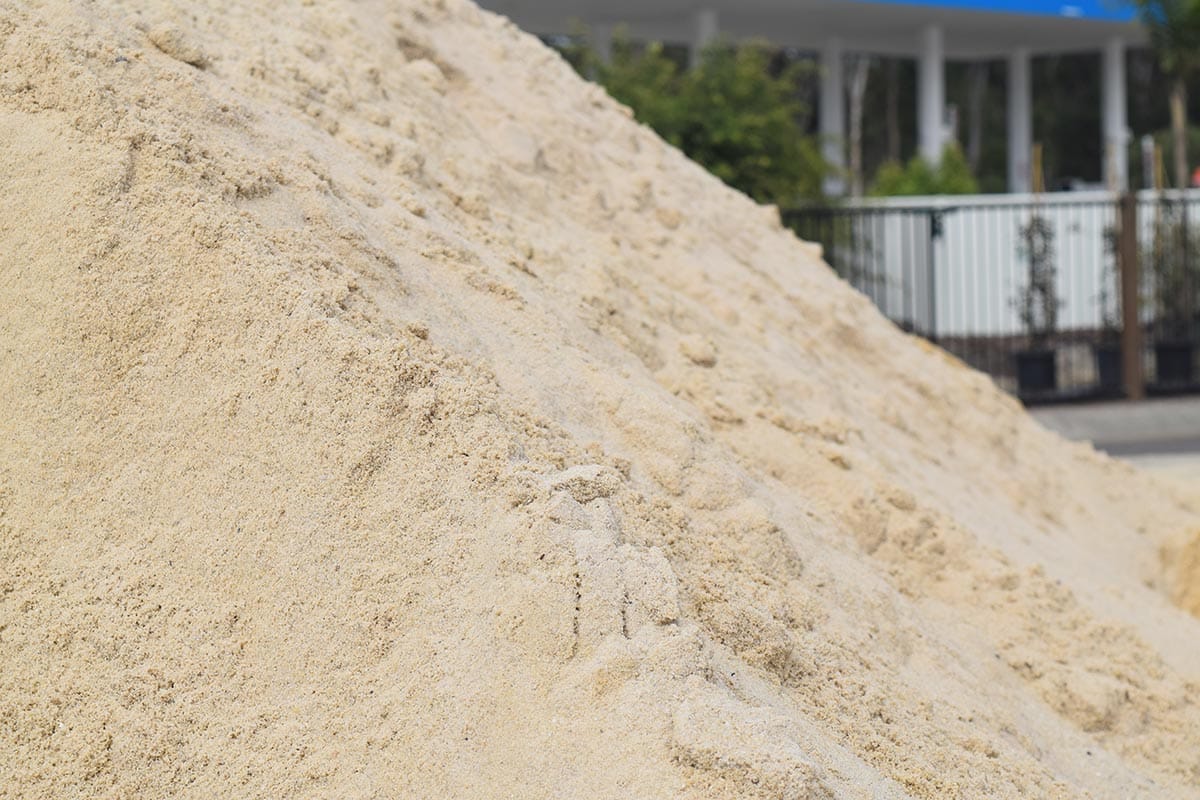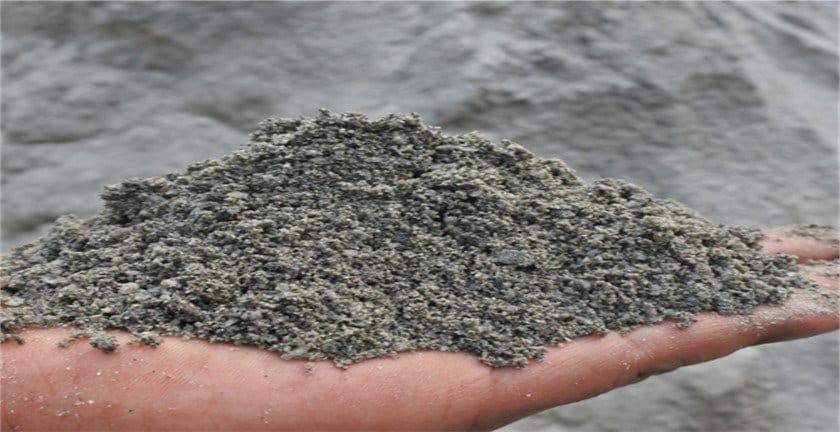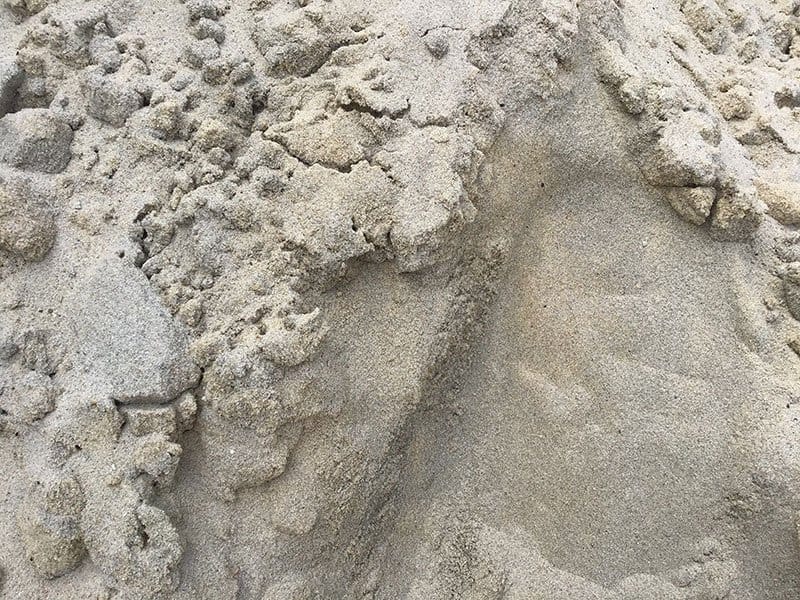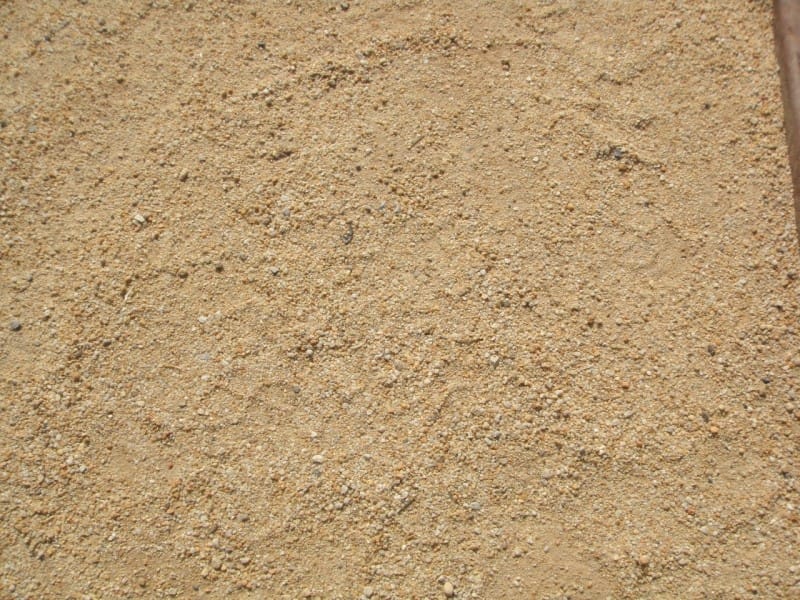Take The Quiz On This Post
Read the post, then take the quiz—test your knowledge and see what you’ve learned!
Chapter 1: Introduction to Types Of Construction Sand
1.1. Overview of Sand's Role in Construction
Sand, often perceived as a ubiquitous and simple material, plays a pivotal role in construction. Its presence is not just commonplace but crucial across various phases of building and structural development. From its use in the creation of concrete mixtures to serving as a base for laying foundations, sand's versatility cannot be overstated. Its granular texture and ability to compact and bind make it an indispensable resource in the construction industry.
1.2. Historical Perspective of Sand Usage
Tracing back to ancient civilisations, sand has been a fundamental element in construction. The Egyptians used sand alongside gypsum and lime to create their iconic pyramids. In Roman architecture, sand was a key ingredient in making concrete, which shaped their aqueducts and coliseums. This historical reliance on sand illustrates its enduring importance and has set a foundation for modern construction methodologies.
1.3. Importance of Choosing the Right Type of Sand
The significance of selecting the appropriate type of sand for specific construction activities cannot be understated. Different construction tasks demand different sand types, each with unique properties and suitability. The correct choice of sand directly impacts the durability, strength, and longevity of structures. For instance, while fine river sand may be ideal for plastering, it may not provide the necessary strength for concrete construction, where coarser sand types are more suitable. Understanding these nuances is essential for construction professionals aiming to optimise their projects' structural integrity and sustainability.
In summary, sand is more than just tiny grains under our feet; it is a construction cornerstone. Its historical use and the need for careful selection underscore its critical role in building the world around us.
Chapter 2: Types Construction Sand

2.1. River Sand: Properties and Uses
River sand, sourced from riverbeds and banks, is renowned for its fine, smooth texture and uniform grain size. It's predominantly utilized in plastering, masonry, and landscaping due to its ability to create a smooth finish and adherence to building materials. River sand's natural composition makes it an ideal choice for achieving aesthetic appeal in construction projects.

2.2. Concrete Sand: Essential for Structural Integrity
Concrete sand, a coarser sand variety, is pivotal in construction for creating strong and durable concrete structures. It's typically made from crushed quartz, which gives it a rougher texture, enhancing the binding properties in concrete mixtures. This sand type is indispensable for laying robust foundations, constructing driveways, and forming sidewalks.

2.3. M-Sand: Modern Alternative for Construction
Manufactured Sand (M-Sand) has emerged as a contemporary substitute for traditional sand in construction. Produced through the crushing of granite stones, M-Sand is free from impurities and offers consistency in grain size. It's gaining popularity for use in concrete and masonry works due to its higher compressive strength and uniformity.

2.4. Fill Sand: Versatility in Use
Fill sand, characterised by its adaptability, is primarily employed for backfilling in construction. Its composition often includes a mix of rock particles and clay, providing stability and support to structures. Fill sand is also used in landscaping, serving as a base for laying pavers and as a leveling material.

2.5. Pit Sand: Characteristics and Applications
Pit sand, procured from pits and quarries, stands out for its sharp grains and angular shape, which enhances its binding ability. This sand type is predominantly used in making concrete and mortar, owing to its rough texture and resistance to moisture. It is an excellent choice for heavy construction works that demand durability and stability.

2.6. Utility Sand (coarse river sand): A Foundation Material
Utility sand, known for its coarse and uneven grains, is extensively used as a foundational material in construction. It offers excellent drainage properties and compaction capabilities, making it suitable for creating a stable base for large structures. This sand type is commonly used in road construction and as a base material for laying pipes and cables.
In conclusion, the diversity of sand types available offers a wide range of possibilities for their application in construction. Each type, with its unique properties, caters to specific needs, contributing to the strength, aesthetics, and longevity of construction projects. Selecting the right type of sand is crucial in achieving the desired outcomes in any construction endeavour.
Chapter 3: Analysing Sand Types Based on Their Properties
3.1. Texture and Composition Analysis
The texture and composition of sand play pivotal roles in determining its suitability for various applications. The granular nature of sand significantly influences its cohesiveness and water retention capabilities. For example, sands with finer grains, such as river sand, exhibit excellent workability, making them ideal for plastering and masonry. Conversely, coarser sands like pit and utility sand, characterised by their irregular granules, are preferred in applications requiring higher strength and compaction, such as in foundation layers.
3.2. Durability and Strength Considerations
The durability and strength of sand are crucial factors in construction, directly impacting the longevity and stability of structures. Sand types with higher quartz content, such as concrete sand, offer greater resistance to weathering and wear, thereby enhancing the strength of the concrete. In contrast, sands with higher clay content may lead to shrinkage and lower strength, posing challenges in structural applications.
3.3. Suitability for Different Construction Purposes
The choice of sand type is heavily influenced by the specific construction purpose. For instance, M-Sand, with its uniform particle size and angular shape, provides excellent binding properties, making it a preferred choice for concrete and masonry work. On the other hand, the softer texture of river sand is more suitable for finishes and aesthetic applications.
3.4. Environmental Impact of Sand Types
The environmental impact of different sand types is an emerging consideration in sustainable construction practices. The extraction of river sand, for instance, can lead to riverbed erosion and ecological imbalance. Manufactured sand, while mitigating these environmental impacts, requires energy-intensive production processes. Therefore, balancing environmental considerations with construction requirements is increasingly becoming a focal point in the selection of sand types.
By analysing texture, composition, durability, and environmental impact, construction professionals can make informed decisions, optimising both the performance and sustainability of their projects.
Chapter 4: Practical Applications of Different Sand Types
4.1. River Sand in Masonry and Landscaping
River sand, known for its fine grains and smooth texture, is a staple in both masonry and landscaping projects. In masonry, its ability to create a perfect blend with cement results in a smooth, workable mortar, ideal for bricklaying and plasterwork. In landscaping, river sand is valued for its aesthetic appeal, often used in creating elegant pathways and garden beds due to its finer texture and natural appearance.
4.2. Using Concrete Sand in Foundations and Pavements
Concrete sand, with its coarser texture and better compaction properties, is essential in the construction of strong and durable foundations. It is the preferred choice for creating concrete mixtures, offering the right balance of strength and flexibility. In pavement construction, its robust nature provides a sturdy base, ensuring longevity and resistance to wear and tear.
4.3. M-Sand in Building Construction: Advantages
Manufactured Sand (M-Sand) has revolutionised building construction with its uniform particle size and enhanced durability. Its controlled manufacturing process eliminates the presence of impurities, making it an excellent alternative in concrete production and structural works. M-Sand's consistent quality brings predictability in strength and finishing, making it a preferred choice in modern construction practices.
4.4. Fill Sand for Backfilling and Leveling
Fill sand, primarily used for backfilling, plays a crucial role in ensuring the stability of structures. Its compact nature allows for solid backfilling of foundations and trenches, providing a stable base for further construction. Additionally, its leveling properties are indispensable in landscaping, helping to create even surfaces for lawns and garden beds.
4.5. Utilising Pit Sand in Concrete and Mortar
Pit sand, characterised by its rough texture and angular particles, is a prime choice for concrete and mortar mixtures. Its gritty nature enhances the binding ability of cement, resulting in a stronger and more resilient concrete structure. In mortar, pit sand provides the necessary rigidity, making it an ideal component in building durable walls and structures.
4.6. Utility Sand in Landscaping and Infrastructure
Utility sand, with its coarse and irregular granules, is widely used in various infrastructural projects. Its drainage properties make it an essential component in laying pipe beds and drainage systems. In landscaping, utility sand is used to establish a solid base for pavers and stones, ensuring stability and longevity in garden paths and patios.
From the fine grains of river sand in masonry and landscaping to the robust utility sand in infrastructure, each type of sand plays a pivotal role in building and maintaining strong, durable, and aesthetically pleasing structures.
Chapter 5: Challenges and Solutions in Construction Sand Usage
5.1. Addressing the Scarcity of Natural Sand
The scarcity of natural sand is an increasingly pressing issue in the construction industry. Over-exploitation of river and beach sands for construction purposes has led to environmental degradation and legal restrictions. This scarcity poses a challenge to the sustainability of construction projects.
Innovations such as the use of crushed rock or M-Sand as alternatives are gaining traction. These solutions not only address the scarcity but also ensure a consistent supply of high-quality sand for construction purposes.
5.2. Environmental Concerns and Sustainable Practices
Environmental concerns associated with sand extraction, such as habitat destruction and riverbed erosion, have prompted the industry to adopt more sustainable practices. Utilising recycled materials and industrial by-products as a partial replacement for sand in construction is a viable solution. For example, the use of fly ash, slag, and recycled concrete aggregates helps conserve natural sand while reducing the carbon footprint of construction projects.
5.3. Quality Control in Sand Procurement
Maintaining quality control in sand procurement is crucial for the structural integrity and longevity of construction projects. The implementation of stringent quality control measures, such as regular testing for parameters like grain size, silt content, and strength, is essential. Additionally, certifications and compliance with industry standards are critical in ensuring the quality and suitability of sand used in construction.
Addressing natural sand scarcity, embracing environmental sustainability, and ensuring quality control are key to the future of sand usage in construction. These efforts not only contribute to the sustainability of construction projects but also help in preserving natural resources for future generations.
Chapter 6: Technological Advances in Sand Usage
6.1. Innovations in Sand Manufacturing
The construction industry is witnessing a technological revolution in sand manufacturing, aimed at overcoming the limitations of natural sand. Advanced crushing techniques are being employed to produce manufactured sand (M-Sand) that offers superior consistency and performance. This method involves precise crushing of rock to desired sizes, ensuring uniformity in grain size and shape. The result is a more predictable, reliable aggregate for construction, reducing dependence on naturally occurring sand.
6.2. The Role of AI and Machine Learning in Sand Quality Assessment
Artificial Intelligence (AI) and Machine Learning (ML) are playing a significant role in enhancing the quality assessment of sand. These technologies enable more accurate and timely analysis of sand properties, such as grain size distribution, mineral content, and impurity levels. By leveraging AI algorithms, manufacturers can quickly analyse large datasets, ensuring that the sand meets strict quality standards. This approach not only improves the quality of sand but also contributes to more sustainable and efficient manufacturing processes.
6.3. Future Trends in Sand Utilisation in Construction
Looking ahead, the future trends in sand utilisation in construction are geared towards sustainability and efficiency. One emerging trend is the development of synthetic sand from waste materials, which reduces environmental impact and conserves natural resources. Additionally, there is a growing focus on optimizing sand usage through precision engineering and 3D printing technologies, which promise to transform construction methodologies by reducing waste and enhancing design capabilities.
With the integration of AI, ML, and innovative manufacturing processes, the construction industry is poised to overcome the challenges of natural sand scarcity and environmental impact. These technological strides not only assure a sustainable future for construction but also open new avenues for efficiency and innovation in building practices.
Chapter 7: FAQs in Construction Sand Use
7.1. What are the Key Differences Between River Sand and M-Sand?
One of the most common questions in the construction industry pertains to the differences between River Sand and Manufactured Sand (M-Sand). River Sand is naturally occurring, sourced from river beds and banks, known for its fine grains and smooth texture. It's typically used in plastering, masonry, and landscaping. M-Sand, on the other hand, is produced through the crushing of granite or other hard stones. It has a more uniform particle size and shape, which ensures better strength and bonding in concrete and masonry works. M-Sand is also free from organic and clay impurities, making it a more durable and sustainable option.
7.2. How Does Sand Quality Affect Concrete Strength?
The quality of sand significantly impacts the strength of concrete. Factors such as grain size, shape, and purity of the sand influence the overall strength and durability of the concrete mix. Coarser sands like Concrete Sand provide better strength due to their rough texture and ability to bind well with cement. Impurities in sand, such as clay and silt, can weaken the mix, leading to reduced strength and durability. Therefore, consistent quality control and adherence to industry standards are vital for ensuring the strength and longevity of concrete structures.
7.3. What are Sustainable Alternatives to River Sand in Construction?
With the growing concern over environmental sustainability and the depletion of river sand resources, several alternatives have emerged in the construction industry. These include M-Sand, which is manufactured from hard rocks and is a sustainable and eco-friendly option. Other alternatives include recycled aggregates, crushed glass, and slag from industrial waste, which not only help conserve natural sand but also reduce the carbon footprint of construction activities. These sustainable alternatives are becoming increasingly popular due to their environmental benefits and comparable structural properties.
Understanding these aspects is crucial for professionals to make informed decisions, balancing the needs for strength, sustainability, and environmental responsibility in their construction projects.
Chapter 8: Conclusion
8.1. Summarising the Importance of Sand in Construction
The journey through the various aspects of sand in construction culminates with a reaffirmation of its indispensable role. From the historical evolution of its use to the sophisticated technological advancements in sand manufacturing, it's evident that sand remains a cornerstone in construction. Each type of sand, with its unique properties, caters to specific requirements, ensuring structural integrity, aesthetic appeal, and sustainability in construction projects.
8.2. Future Perspectives in Sand Usage for Sustainable Construction
Looking ahead, the construction industry faces the challenge of balancing the demand for sand with the need for environmental sustainability. The advent of M-Sand, the utilisation of recycled materials, and the advancements in manufacturing technologies pave the way for a more sustainable future. These developments are not just answers to the scarcity and environmental impact of natural sand usage but also a testament to the industry's adaptability and commitment to innovation.
8.3. Encouraging Further Research and Innovation in Sand Usage
The future of construction sand usage is poised for further innovation and research. Continued exploration in the efficient use of alternative materials, enhancement of sand quality through AI and machine learning, and adoption of sustainable practices will drive the industry forward. Encouraging collaborative efforts among researchers, industry experts, and policymakers will be key in shaping an environmentally responsible and technologically advanced construction landscape.
In conclusion, sand’s journey from riverbeds to new homes is a testament to its versatility and indispensability in construction. As the industry evolves, so too will the ways in which we use, manufacture, and think about sand, always striving for that perfect balance between meeting human needs and preserving our natural world.







